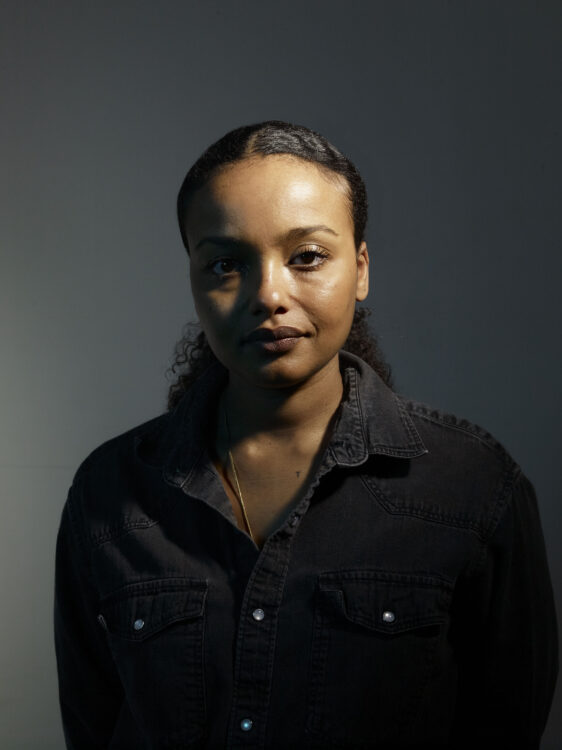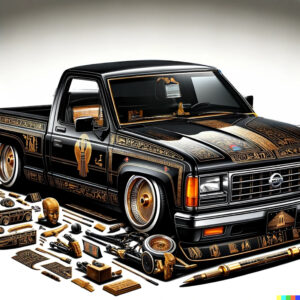
The Edifice of Tirhaga Pt. I
Azza El Siddique is an installation artist who investigates systems of power and spirituality through sensorial materials such as smoke, scent, ash and decay.
Artist BioThe Edifice of Tirhaga Pt. I will augment El Siddique’s late artist brother’s beloved 1993 Nissan pickup truck into a mobile public sculpture that enacts lively funeral processions full of music, scents, candy colored artworks, and hydraulics. Using ancient mummification rituals and contemporary islamic burial preparations as a template, El Siddique will excavate, reassemble, mummify, and anoint Teto’s truck in the same way that the dead body of a loved one is prepared to be sent off into the afterlife. In ancient Egypt, the organs of pharaohs were removed and embalmed for safe-keeping in vessels called canopic jars. El Siddique will perform this same death rite on the body of Teto’s pickup truck, lovingly removing and preserving these car parts as the last relics that contain the invisible residue of her brother’s life. Proof of his existence is found within the wear and tear of the truck and the literal DNA of his that remains in its surfaces. El Siddique will extract his DNA from the interior in order to preserve the physical makeup of his living self. His unique DNA sequence is something that she will protect, cherish, and encode into future A.I. versions of her dead brother. This project is the first installment of a series of works that combines ancient and future technologies to carry on the evolution of a life abruptly cut short through radical acts of public longing. While many imaginations of future worlds explore the possibilities of immortality, El Siddique is more interested in exploring the futures of our collective death traditions.

Azza El Siddique
New Haven, Connecticut
Azza El Siddique received the Creative Capital Award in 2024. El Siddique makes large scale ruinous temples to entropy. In immersive installations, imagined sites of worship and mourning are stripped bare to reveal their basic scaffolding. Within these structures El Siddique re-inserts common materials that linger long after all else is lost: steel, water, smoke, and scent. Over the time-span of each installation, these materials systemically decompose clay objects that dissolve and return to the earth from which they came. Personal tragedy sparked her interest in exploring systems of institutional power through art. As a product of Sudanese immigrant parents who believed that education could enable them to break through socioeconomic barriers, she was failed by the systems she was taught to rely on. She creates systems of collapse within her work, setting up the parameters to explore what permeates death and what can be revived through it.
